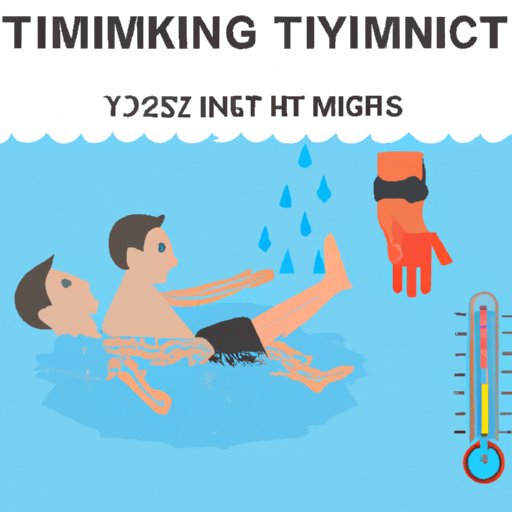Introduction
Hypothermia is a medical emergency that occurs when the body loses heat faster than it can produce heat, causing a dangerously low body temperature. It is most commonly caused by exposure to cold environments, particularly cold water. Signs and symptoms of hypothermia include shivering, confusion, slow breathing, and pale skin. If left untreated, hypothermia can lead to cardiac arrest and even death. So, what temperature does water need to be in order to cause hypothermia?

Risk Factors for Developing Hypothermia in Cold Water
Swimming in cold water can be dangerous, and certain factors can increase a person’s risk of developing hypothermia. These include:
- Exposure time in the cold water: The longer a person is exposed to cold water, the more likely they are to develop hypothermia. According to a study published in the journal Wilderness & Environmental Medicine, “even brief exposures of less than 10 minutes can result in clinically significant hypothermia if the water temperature is 10°C or lower.”
- Physical condition of the swimmer: Swimmers who are physically fit are better able to withstand cold temperatures than those who are not as physically fit. Additionally, swimmers who are overweight or underweight are at greater risk of developing hypothermia.
- Underlying medical conditions: People with certain medical conditions such as diabetes, thyroid disorders, and heart or circulatory problems are more susceptible to hypothermia. Additionally, people who take certain medications may also be at an increased risk.

Exploring How Low Does Water Temperature Need to Be to Cause Hypothermia
The human body is equipped with a number of mechanisms to regulate its temperature. When exposed to cold water, these mechanisms kick into gear in an effort to maintain a normal body temperature. But, when the water temperature drops below 15°C, the body’s ability to regulate temperature is compromised and hypothermia can occur.
It is important to note that water temperature is not the only factor that can lead to hypothermia. Wind chill, air temperature, and humidity can all play a role in increasing the risk of hypothermia. Therefore, it is important to monitor the water temperature and other environmental conditions before entering the water.
Preventing Hypothermia While Swimming in Cold Water
There are several steps that swimmers can take to reduce their risk of developing hypothermia while swimming in cold water. These include:
- Wearing a wetsuit or drysuit: Wearing a wetsuit or drysuit helps to insulate the body and protect against the effects of cold water. Make sure the suit is properly fitted and made of materials that are designed to keep you warm.
- Staying aware of the weather conditions: Pay attention to the weather forecast before venturing out into cold water. If the temperature is below 15°C, consider wearing a wetsuit or drysuit and taking extra precautions.
- Taking regular breaks from swimming: Taking regular breaks from swimming can help prevent hypothermia. If the water temperature is below 15°C, limit your time in the water and take frequent breaks to warm up.
Conclusion
Hypothermia is a serious condition that can occur when someone is exposed to water temperatures below 15°C. Risk factors for developing hypothermia include exposure time in the cold water, physical condition of the swimmer, and underlying medical conditions. To reduce the risk of hypothermia while swimming in cold water, swimmers should wear a wetsuit or drysuit, stay aware of the weather conditions, and take regular breaks from swimming.
(Note: Is this article not meeting your expectations? Do you have knowledge or insights to share? Unlock new opportunities and expand your reach by joining our authors team. Click Registration to join us and share your expertise with our readers.)
